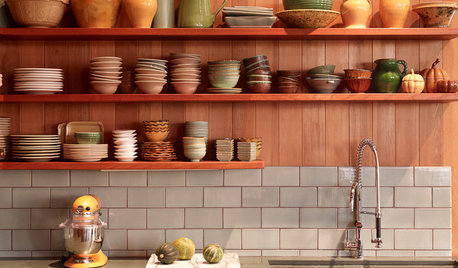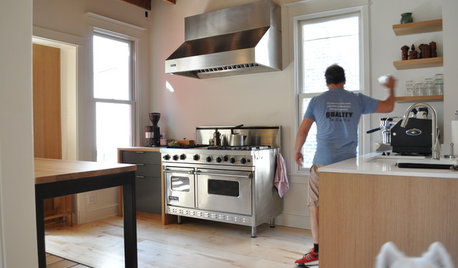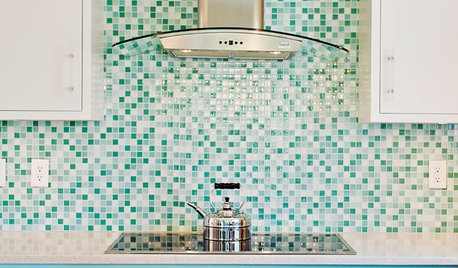Hood for Induction
shari_n_pete
15 years ago
Related Stories

KITCHEN DESIGNHow to Choose the Right Hood Fan for Your Kitchen
Keep your kitchen clean and your home's air fresh by understanding all the options for ventilating via a hood fan
Full Story
KITCHEN APPLIANCESThe Many Ways to Get Creative With Kitchen Hoods
Distinctive hood designs — in reclaimed barn wood, zinc, copper and more — are transforming the look of kitchens
Full Story
5 Stunning Modern Range Hoods
Today's kitchen range hoods can look like sleek sculptures. Here's what to look for when you go shopping for one
Full Story
KITCHEN DESIGNA Cook’s 6 Tips for Buying Kitchen Appliances
An avid home chef answers tricky questions about choosing the right oven, stovetop, vent hood and more
Full Story
LIFETell Us: What Made You Fall for Your Kitchen?
Show the heart of your home some love for Valentine’s Day
Full Story
KITCHEN APPLIANCESLove to Cook? You Need a Fan. Find the Right Kind for You
Don't send budget dollars up in smoke when you need new kitchen ventilation. Here are 9 top types to consider
Full Story
KITCHEN APPLIANCESFind the Right Cooktop for Your Kitchen
For a kitchen setup with sizzle, deciding between gas and electric is only the first hurdle. This guide can help
Full Story
KITCHEN DESIGNPro Chefs Dish on Kitchens: Paul Kahan Shows His Urban Sanctuary
Peek inside Kahan's newly redone home kitchen and learn what he considers most important for a cooking space
Full Story
TASTEMAKERSPro Chefs Dish on Kitchens: Michael Symon Shares His Tastes
What does an Iron Chef go for in kitchen layout, appliances and lighting? Find out here
Full Story
KITCHEN DESIGN9 Popular Stovetop Options — Plus Tips for Choosing the Right One
Pick a stovetop that fits your lifestyle and your kitchen style with this mini guide that covers all the basics
Full StorySponsored
More Discussions







mel_bc
clinresga
Related Professionals
Bloomington Kitchen & Bathroom Designers · Carlisle Kitchen & Bathroom Designers · Highland Park Kitchen & Bathroom Designers · Sun City Kitchen & Bathroom Designers · Bellevue Kitchen & Bathroom Remodelers · Franconia Kitchen & Bathroom Remodelers · Glendale Kitchen & Bathroom Remodelers · Manassas Kitchen & Bathroom Remodelers · Republic Kitchen & Bathroom Remodelers · Schiller Park Kitchen & Bathroom Remodelers · Tulsa Kitchen & Bathroom Remodelers · Shaker Heights Kitchen & Bathroom Remodelers · Bon Air Cabinets & Cabinetry · Dover Cabinets & Cabinetry · Franklin Plumbersdavidro1
clinresga
Fori
shari_n_peteOriginal Author
clinresga
davidro1
clinresga
datura-07
shari_n_peteOriginal Author
kaseki
clinresga
Fori
mel_bc
ava2351
datura-07